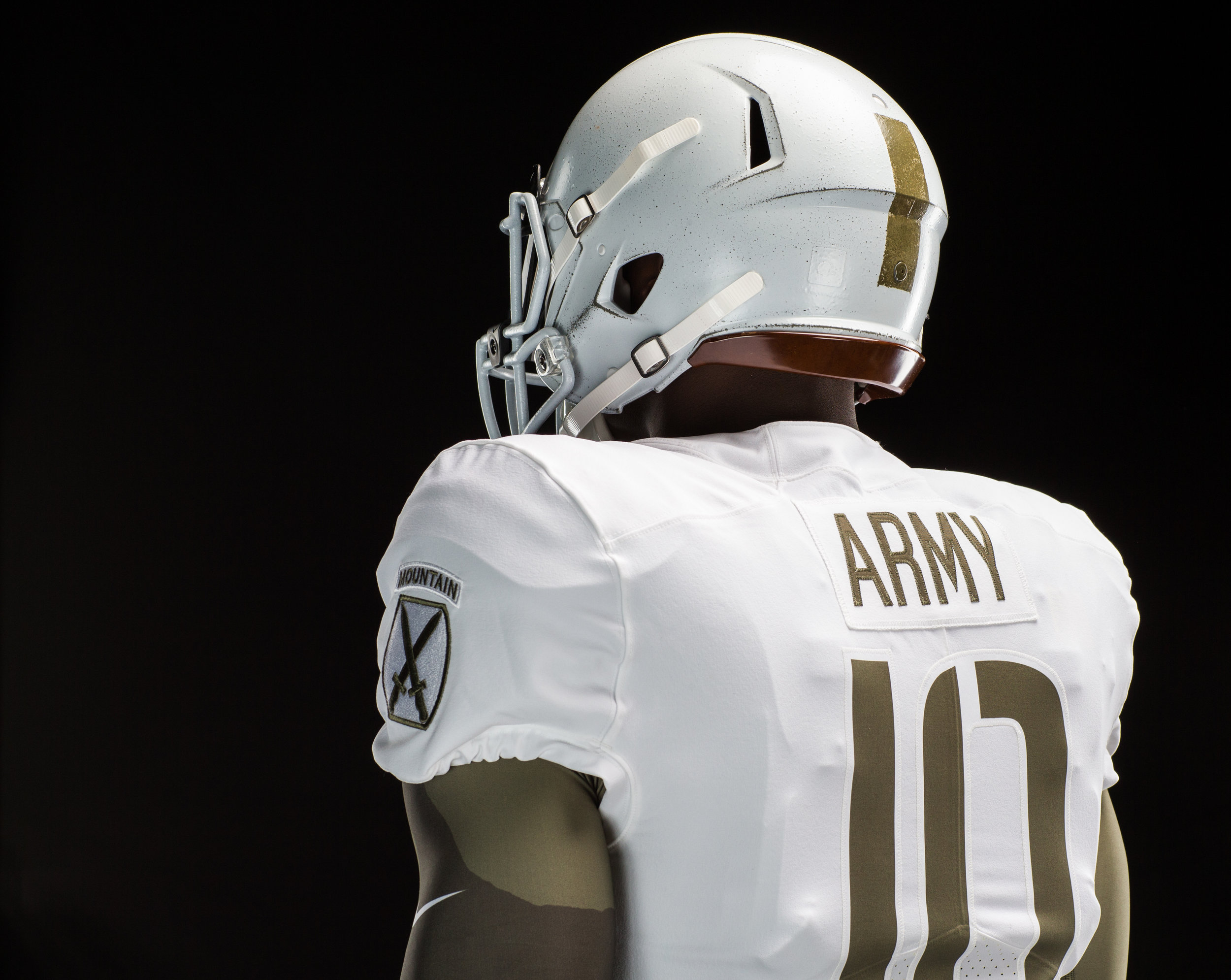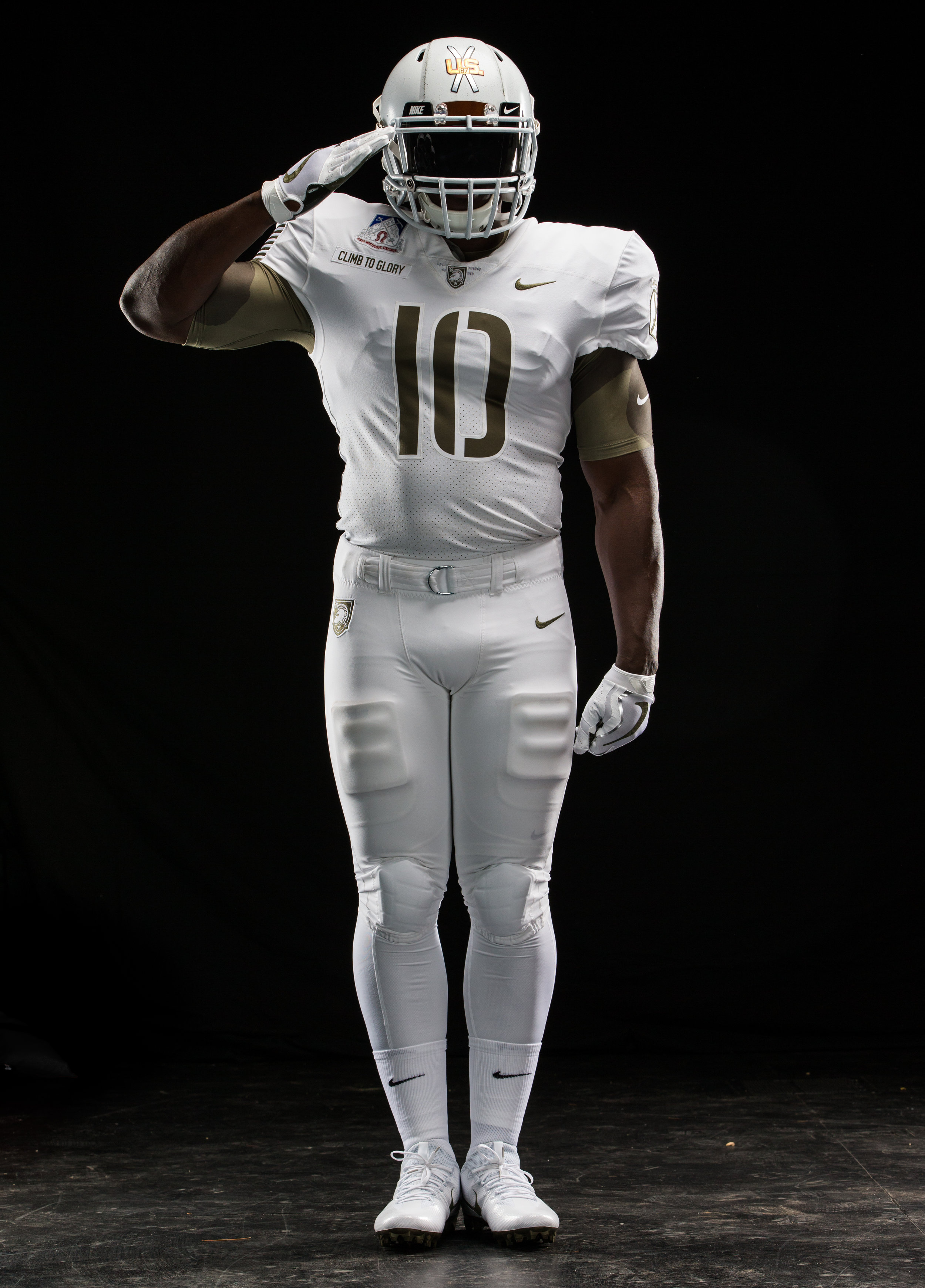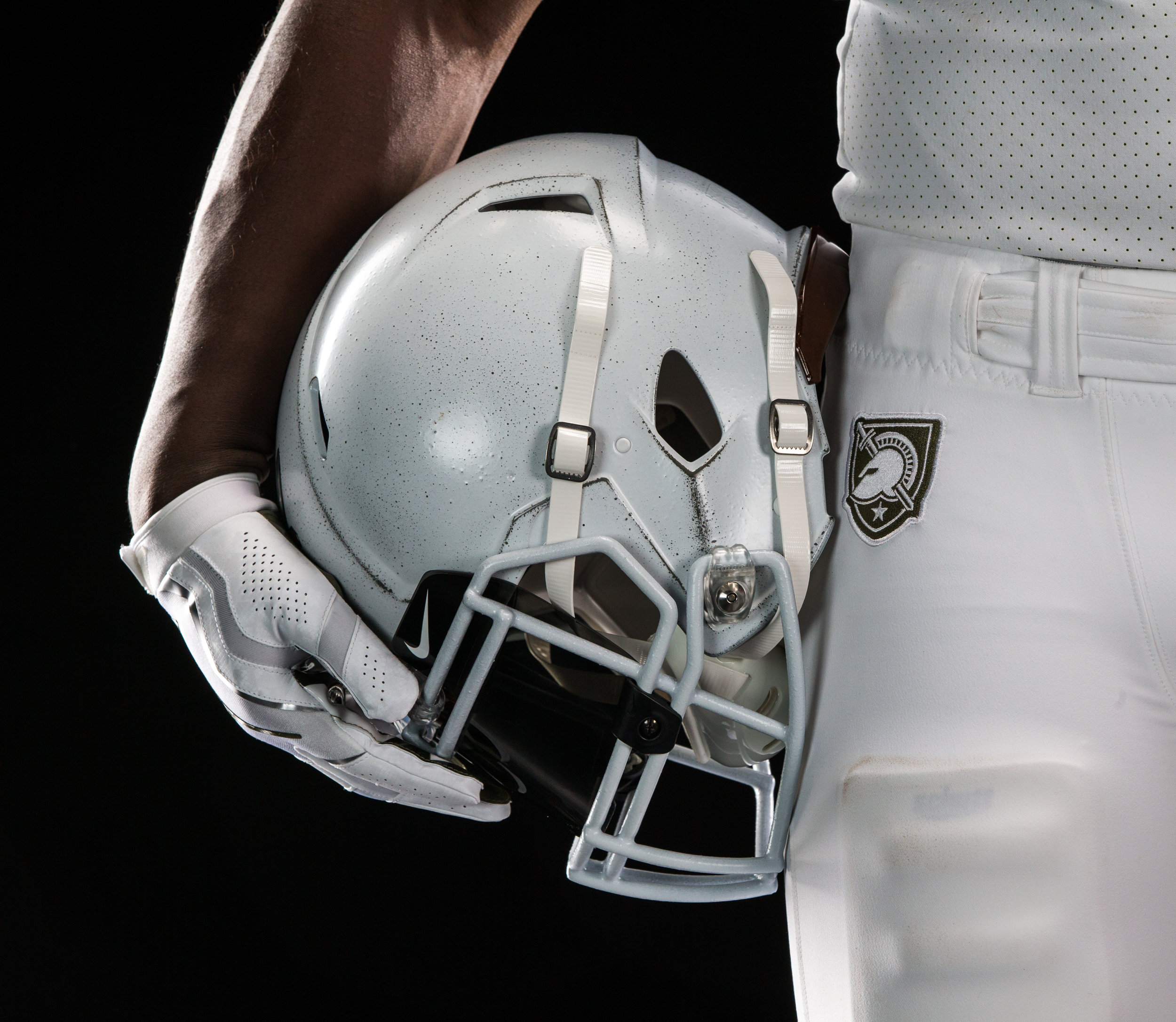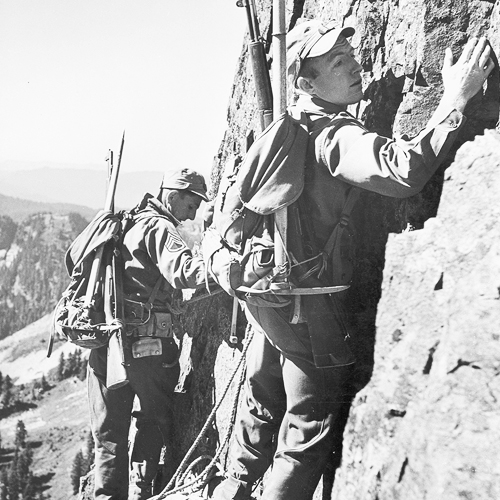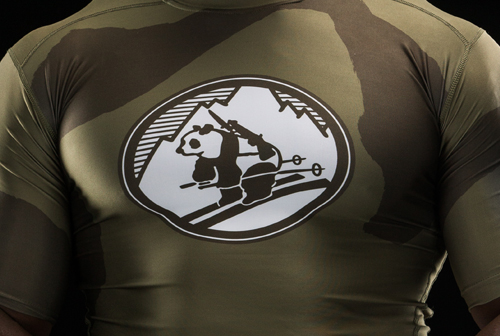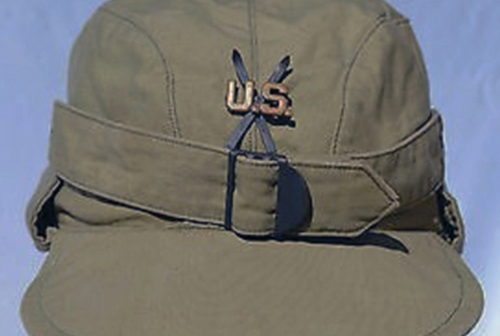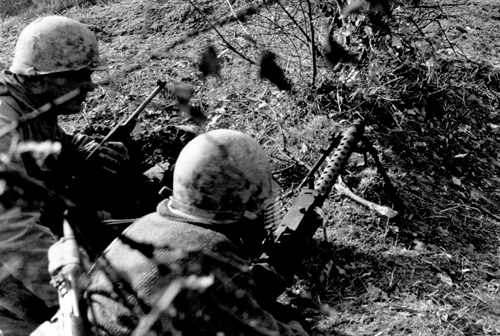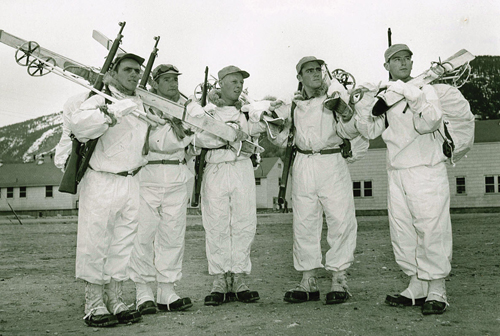
ARMY, NIKE TEAM UP FOR 2017 ARMY-NAVY UNIFORM TO HONOR THE SOLDIERS OF THE 10TH MOUNTAIN DIVISION
CONQUER THE LAND
The 2017 Army-Navy Uniform tells the story of the soldiers of the 10th Mountain Division and their birth in the winter warfare of World War II. The specialty of the 10th Mountain Division is to conquer the land. They fight on the harshest terrain, in any climate, anywhere in the world, to protect and defend the United States of America. We honor the past by re-telling the story of the “Climb to Glory.” A story of valor, courage, and sacrifice. Inspired, humbled, and motivated by the soldiers that came before us, we don their patches, adopt their mottos, and hold their deeds close to our hearts.
HISTORY
Uniquely trained in Colorado to eventually fight in the Alps, the 10th Mountain Division was essential in ending Nazi resistance in Northern Italy. The division's exceptional training combined with the specialized alpine skills of its members allowed the division to succeed over terrain that was thought impassable.
CLIMB TO GLORY!
harsh terrain, in any climate, anywhere in the world
ALPINE ORIGINS
THE CLIMB TO GLORY
PANDO COMMANDOS
PANDO COMMANDO PATCH
THE WEASEL (M29C)
CROSSED SKI PINS
WHITEWASHED HELMET
FOLLOW ME
FEATURED UNITS
The 10th Mountain Division had at least eighteen different units attached to it at one time or another in Italy. The division even enjoyed the company of the 1st Battalion of the Brazilian Expeditionary Force for a short time. We are honoring many of the division's organic units such as the 85th, 86th, and 87th Mountain Infantry Regiments, and the 126th Mountain Engineer Battalion.
WWII ERA FLAG
THE INFLUENCE OF THE 10TH MOUNTAIN DIVISION
MEDAL OF HONOR
Private First Class John D. Magrath, from East Norwalk, Connecticut, assigned to Company G, 2d Battalion 85th Infantry, is a Medal of Honor recipient from the division. Pfc. Magrath went beyond the call of duty when his company was pinned down by heavy artillery, mortar, and small arms fire, near Castel d'Aiano, Italy. Volunteering to act as a scout, armed with only a rifle, he charged headlong into withering fire, killing two Germans and wounding three in order to capture a machine-gun. Magrath went on to neutralize several other machine-gun nests firing on his company.
Pfc. Magrath fearlessly volunteered again to brave the shelling in order to collect a report of casualties. Heroically carrying out this task, he made the supreme sacrifice.. a climax to the valor and courage that are in keeping with highest traditions of the military service.
INNOVATION
SKI INDUSTRY
TWEET US YOUR STORY
Do you have a relative or someone close to you who served with the 10th Mountain Division? Tweet @GoArmyWestPoint using #ClimbToGlory and your post may be featured! Photos are encouraged. Beat Navy!




